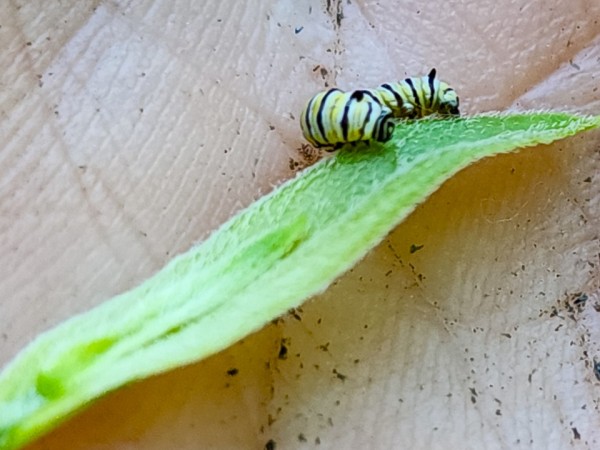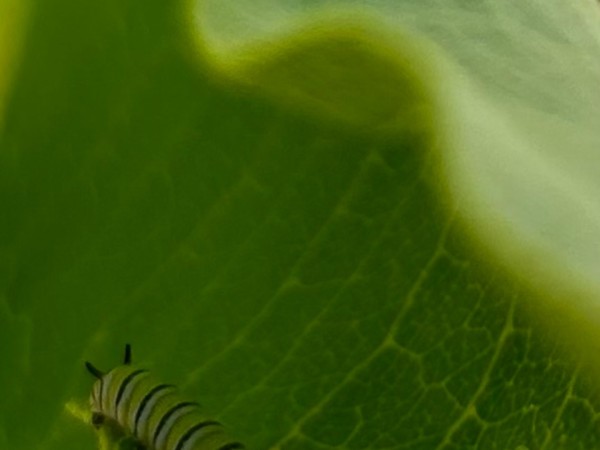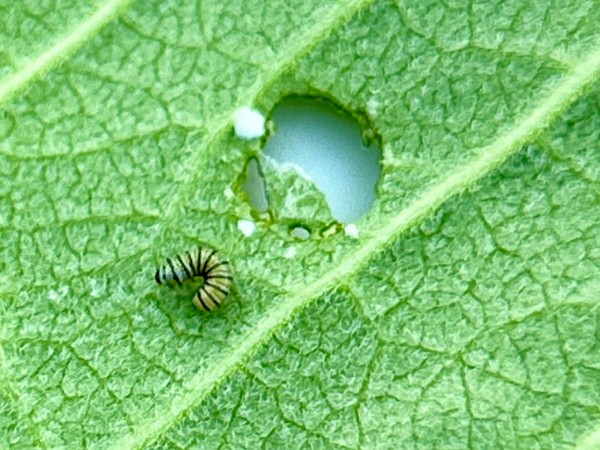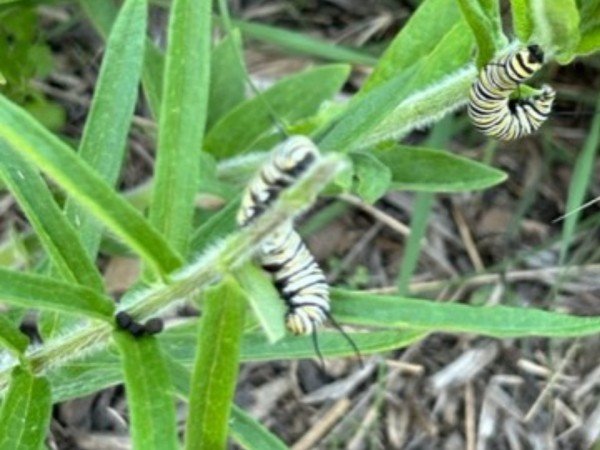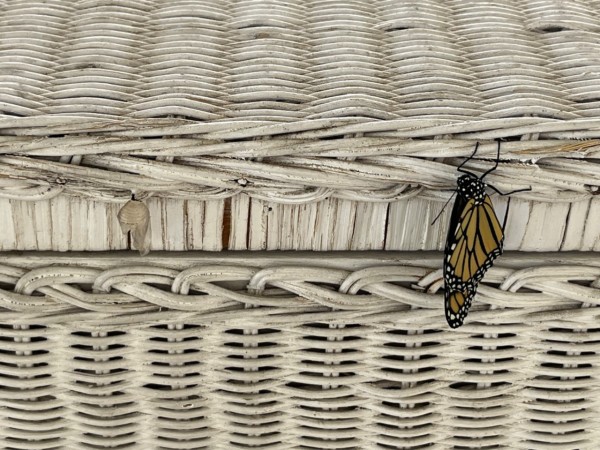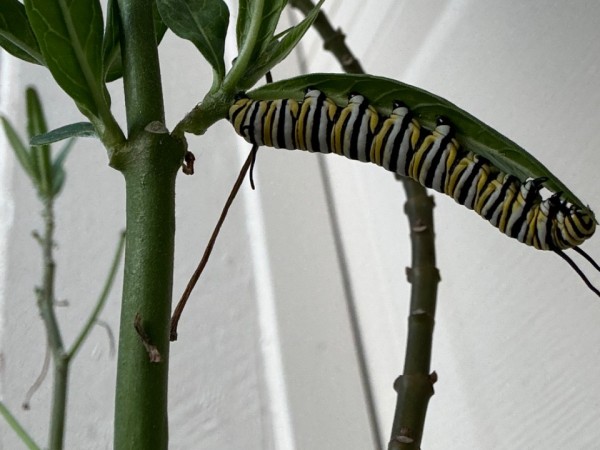Spring migration update #5: eastern migration news
Some participants are reporting monarchs earlier along in the process than usual at this time of year. Michele in Erie, Pennsylvania photographed a caterpillar on May 23, writing, “Very early sighting for me. I usually do not get monarch cats until July. It has been an unseasonably warm spring. Not sure if that has anything to do with it.”
Jon in Lenhartsville, Pennsylvania, farther east, wrote on June 1, “This is the earliest I’ve ever seen caterpillars on my milkweed! Normally, I see them in August.”
Shayne in Dickerson, Maryland, shared a similar sentiment on May 24, writing, “Yesterday saw the first 2 monarch larva of the season. They were both underneath the same common milkweed leaf- along with an un-hatched egg. This is the earliest we’ve ever seen them. Last year we didn’t see the first monarch larva until July.”
Judy in Fort Wayne, Indiana shared a photo on May 25, writing, “Both caterpillars appear to be about 4th instar. It was a real surprise to see them this early and so large. They were found on half-grown Butterfly Milkweeds in the front yard. I checked the common milkweed on the south side of the house and in the back margin of the backyard and did not find any.”
Southern sightings
In Charleston, South Carolina, Thomas captured a monarch hanging out near its chrysalis, writing on May 25, “Adult female emerged this AM from chrysalis sighted 5/11/24 (to the left of the butterfly).
Not all monarchs are on the same timeline, but southern locations are generally more likely to be seeing big caterpillars and even hatched butterflies.
In Friendswood, Texas, just outside of Houston, Erin photographed a large caterpillar on June 2, writing, “A few days out from making a chrysalis.”
While monarchs may have been around for a while now in the southern United States, that doesn’t diminish the enjoyment that they’re bringing to Journey North volunteers. Katherine in Hudson, Florida, on the western side of the state, reported 100 monarchs on June 2, writing the following:
“I've lost count. Every time I go out side I see them almost constantly. I am an official monarch waystation as of this year and ... this is bringing me such joy. I've been able to witness and document all of the stages of the monarch. If you are thinking about being a way station and are on the fence... just do it. There are also so many different types of bees here as well. It makes me happy to think there is honey somewhere made from my flowers. I am unsure if the monarchs here are migrating or wintering and staying. Here are two mating.”
Other small caterpillars are still just getting started.
Laurine in Adel, Iowa recorded nine larvae on June 1, writing, “I have at least 9 larvae eating on 3 separate patches of milkweed at my Bed and Breakfast. There is evidence of 3 more on other milkweeds, but I haven't been able to see them.”
Recent storms in the southern U.S. might be affecting the timing and appearance of monarch migration and reproduction. Journey North observers have noted second and third-generation monarchs, some showing tattered wings, likely from enduring high winds.
“Saw what had to have been the last of the methuselahs. A raggedy monarch looking like it had been through a hurricane,” wrote Susan in Dodge Center, Minnesota on June 4.
Keep reporting
Keep your sightings coming! It’s wonderful to see all of the sightings coming in every day of monarch eggs, larvae and adults.
If you have the chance to spot monarchs at different stages of their life cycle, you can submit sightings to Journey North throughout that process and view all of your reports by visiting the sightings page and clicking “My Sightings.”
Test your knowledge on our Facebook page
Last week, we posted a couple of fun tests for you on our Facebook page to see how well you know monarchs.
The first asked followers to tell the difference between an adult monarch and adult viceroy, one of its closest doppelgangers. Find that post here.
The other was a bit harder, asking you to find a monarch egg among nine similar eggs, but we still weren’t able to fool most of our followers. Whether you know your butterfly eggs or not, it’s fun to see the similarities and differences between butterfly species. Click here and give it a look!

